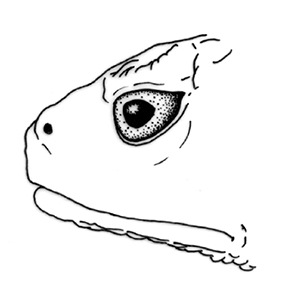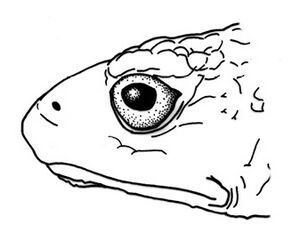Osornophryne bufoniformis facts for kids
Quick facts for kids Osornophryne bufoniformis |
|
|---|---|
 |
|
 |
|
| A female (top) and male (bottom) O. bufoniformis | |
| Conservation status | |
| Scientific classification | |
| Synonyms | |
|
Atelopus bufoniformis Peracca, 1904 |
Osornophryne bufoniformis is a special kind of toad that lives in the high mountains. It belongs to the Bufonidae family, which includes many types of toads. You can find this little toad in the Andes mountains, specifically in southern Colombia and northern Ecuador. People often call it the Peracca's plump toad. This name honors Mario Giacinto Peracca, the scientist who first described this species way back in 1904.
Contents
What Does the Plump Toad Look Like?
Adult male toads are quite small. They measure about 16–23 mm (0.6–0.9 in) from their snout to their rear end. Female toads are a bit larger. They are about 28–36 mm (1.1–1.4 in) long.
These toads have short, thin legs. Their fingers and toes have a special fleshy webbing. This helps them move around. The back of the toad is covered with many round bumps. These bumps are called pustules. They come in different sizes.
The color of their back can be black-brown, dark brown, light brown, or reddish brown. Sometimes, they have a yellow or light brown line on their sides. This line is made of special glands. Their belly can be light or dark brown. It often has yellow or red bumps.
Where Does the Plump Toad Live?
Osornophryne bufoniformis lives in cool, high places. You can find it in mountain forests, bushy areas, and open grasslands called páramo. These areas are very high up. They are between 2,800–4,700 m (9,200–15,400 ft) above sea level.
These toads like to hide on fallen leaves or on the ground. They also live inside special plants called terrestrial bromeliads. Sometimes, they can be found on other plants up to half a meter above the ground.
Life Cycle of the Plump Toad
Unlike many frogs and toads, Osornophryne bufoniformis does not have a tadpole stage. This means their babies do not live in water. Instead, the young toads develop directly inside the egg. They hatch as tiny toadlets, looking like miniature adults.
How Is the Plump Toad Doing?
The Peracca's plump toad is a rare species. Even in places where it lives, it is not very common. Its home is shrinking because of human activities. People are cutting down forests to make farms. They also grow illegal crops, which harms the land. Fires, logging, and new human settlements also destroy their habitat.
Pollution from spraying illegal crops is another big problem. This pollution can hurt the toads and their environment. Luckily, this toad lives in several protected areas. These areas help keep their homes safe.


